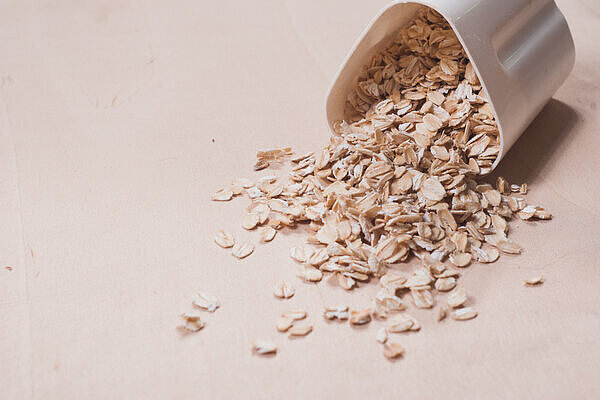Buckwheat

Benefits of buckwheat for dogs
Buckwheat has several benefits for dogs that you should not ignore. For one, buckwheat is a good source of plant-based protein that contains all the essential amino acids. This means that buckwheat can support your dog's muscles and immune system. Buckwheat is also rich in fiber, which can aid digestion and regulate blood sugar levels. This can be particularly beneficial for dogs with diabetes or who are overweight. Buckwheat also contains many vitamins and minerals such as iron, magnesium, zinc and B vitamins. These can improve the health of your dog's skin, coat, nerves and blood.
Disadvantages of buckwheat for dogs
However, buckwheat also has some disadvantages for dogs that need to be considered. Firstly, buckwheat can trigger allergies or intolerances in some dogs. This manifests itself in itching, diarrhea or vomiting, for example. So if you notice that your dog shows such symptoms after eating buckwheat, you should take him to the vet immediately and remove buckwheat from his diet. Secondly, buckwheat in excessive amounts can cause bloating or stomach upset. This is because buckwheat is difficult to digest and contains a lot of starch. You should therefore only give your dog small amounts of buckwheat and cook or soak it well.
How do I prepare buckwheat for my dog?
If you want to feed your dog buckwheat, you should follow a few tips to facilitate digestion and preserve the nutrients. Firstly, you should always wash the buckwheat well to remove any harmful substances or mold. Secondly, you should always cook or soak the buckwheat to soften it and break down the starch. You can use buckwheat either as a whole grain, as flour or as flakes. You can also mix buckwheat with other ingredients such as vegetables, meat or eggs. However, be careful not to add any spices or sugar.
Buckwheat is a healthy and nutritious food for dogs that can provide many health benefits. However, it is important to be aware of the potential disadvantages of buckwheat for dogs and only feed it in moderation.
Properties 14
Are you looking for other ingredients with a specific property?
Just click on them to find more.
If you notice any signs of hypersensitivity or poisoning in your dog, you should see your vet immediately. We are not a substitute for a vet, but we try to be as accurate as possible. Every dog reacts differently and we recommend you get a second opinion or consult your vet if in doubt.
Stay healthy and take good care of your four-legged friend!😊
Similar to Buckwheat
Quinoa is a plant from the foxtail family that grows in the Andes. The seeds of the plant are known as quinoa and are similar in shape and consistency to rice or couscous. Quinoa is gluten-free and...
Amaranth is not a real grain, but belongs to the so-called pseudocereals, such as quinoa or buckwheat. This means that it does not contain gluten, which is often responsible for intolerances....
Millet is a collective term for various types of grain from the sweet grass family. The best-known types of millet are panicle millet, foxtail millet, finger millet, pearl millet and sorghum millet....
Oats are a plant from the sweet grass family. It is mainly grown as fodder for livestock, but is also used as food for humans. Oats have a high content of carbohydrates, fiber, protein, vitamins,...



